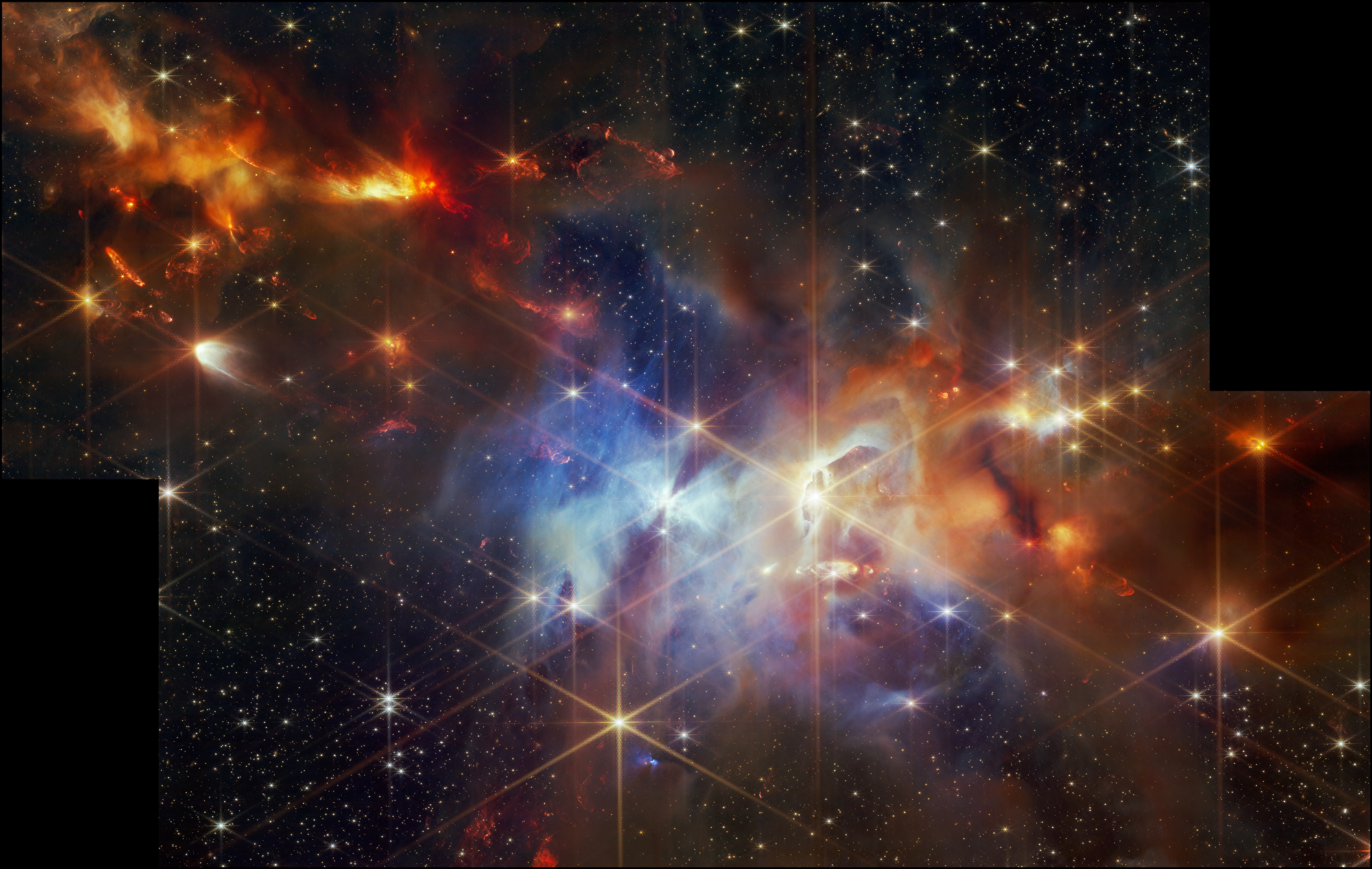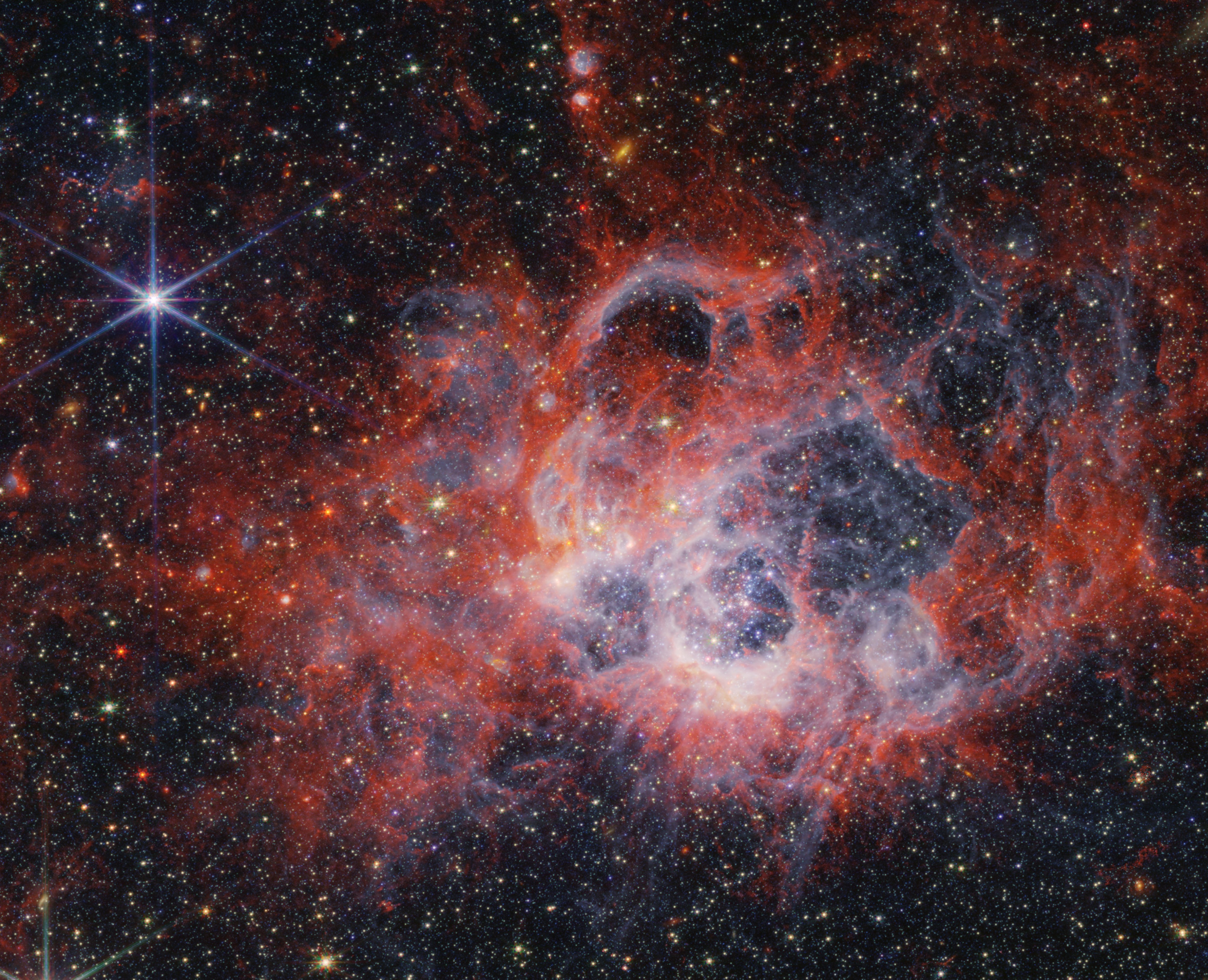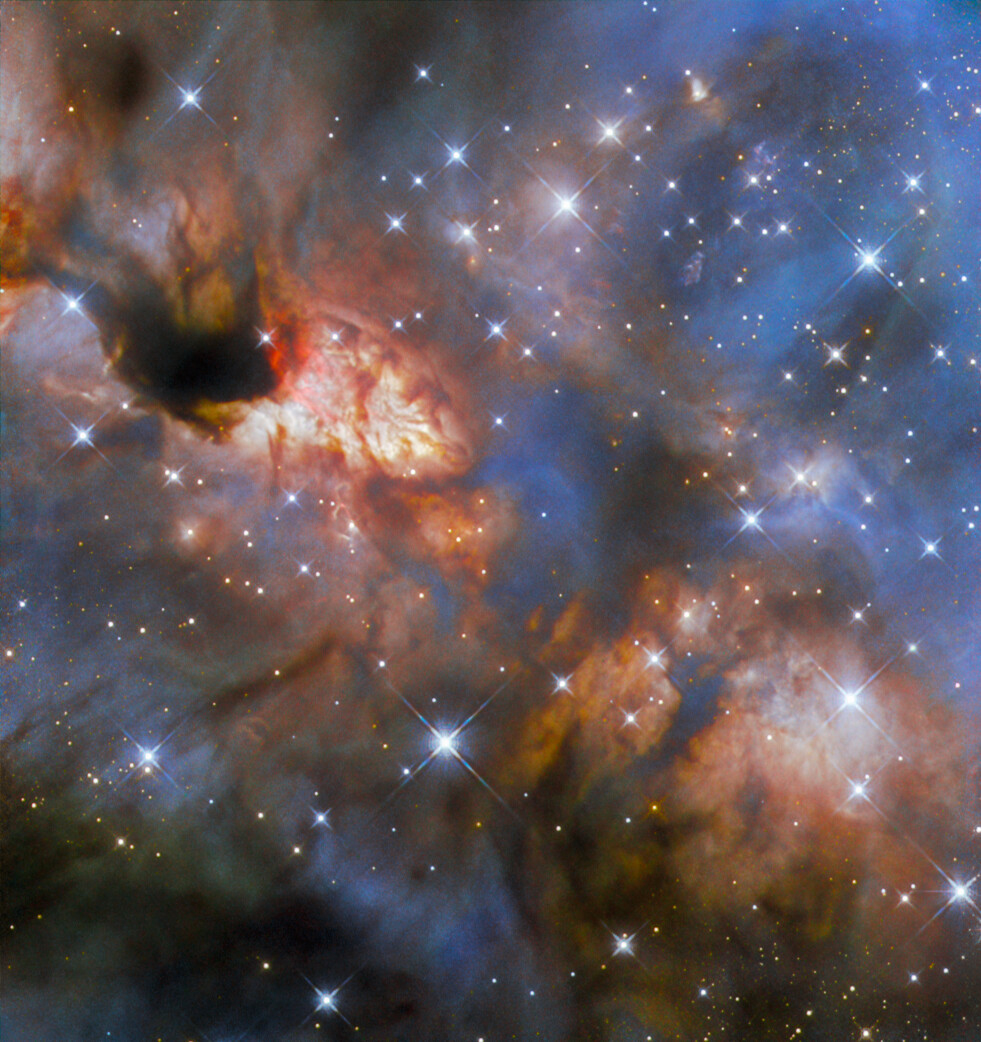Star-forming Nebulae
News & Articles

NASA’s Webb Peers into the Extreme Outer Galaxy
Astronomers have directed NASA’s James Webb Space Telescope to examine the outskirts of our Milky Way galaxy. Scientists call this…

NASA’s Webb Captures Celestial Fireworks Around Forming Star
The colors within this mid-infrared image reveal details about the central protostar’s behavior. The cosmos seems to come alive with…

Pillars of Creation Star in New Visualization from NASA’s Hubble and Webb Telescopes
Made famous in 1995 by NASA’s Hubble Space Telescope, the Pillars of Creation in the heart of the Eagle Nebula…

First of Its Kind Detection Made in Striking New Webb Image
Alignment of bipolar jets confirms star formation theories For the first time, a phenomenon astronomers have long hoped to directly…

Peering Into the Tendrils of NGC 604 with NASA’s Webb
The formation of stars and the chaotic environments they inhabit is one of the most well-studied, but also mystery-shrouded, areas…

Hubble Views a Massive Star Forming
This image from the NASA/ESA Hubble Space Telescope is teeming with color and activity. It features a relatively close star-forming…
Multimedia














